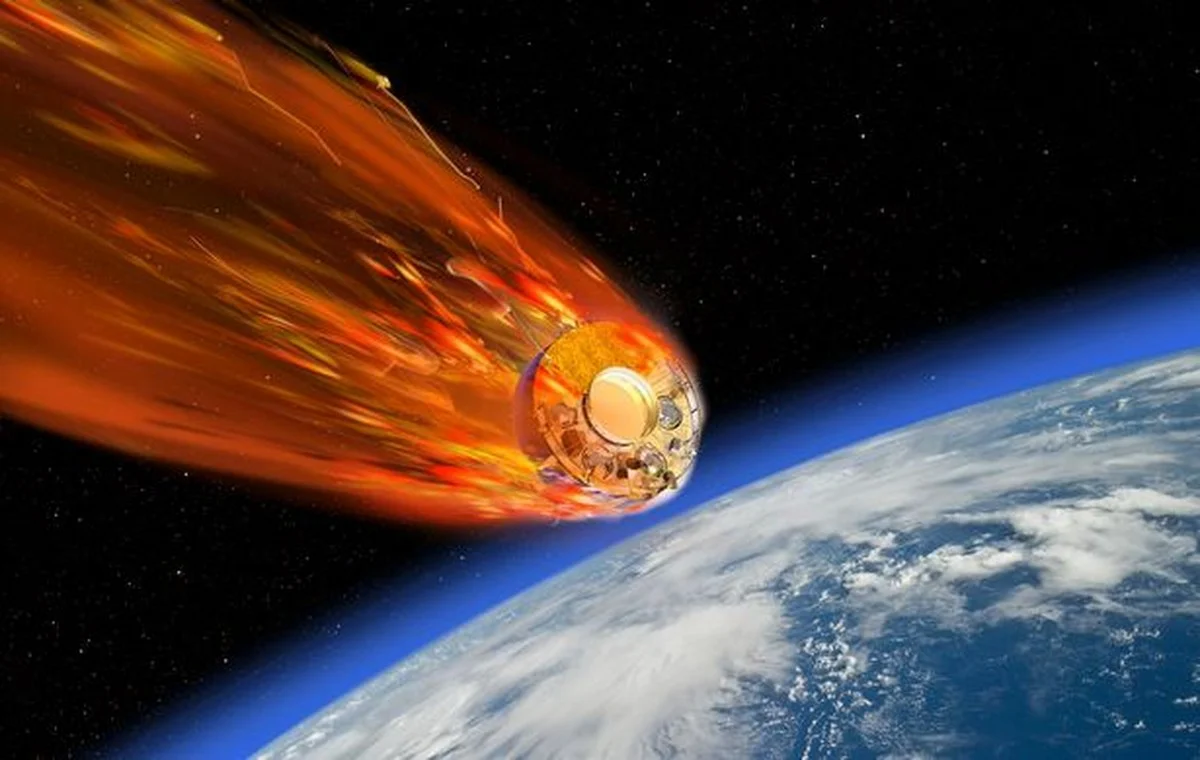10/05/2025
10/05/2025

CAPE CANAVERAL, Fla., May 10, (AP): A Soviet spacecraft launched in 1972 on a failed mission to Venus is believed to have crashed back onto Earth early on Saturday morning. The European Space Agency (ESA), which had been monitoring the craft's uncontrolled descent, reported that it was last detected by radar over Germany. At the time of its expected crash, radars could no longer detect Kosmos 482, leading experts to conclude that "it is most likely that the reentry has already occurred." No injuries or damage have been reported.
Kosmos 482 was part of the USSR's Venera program, a series of probes developed to research the planet Venus. Ten of those missions successfully landed on the hot, barren planet, but the rocket carrying Kosmos 482 malfunctioned. Its upper stage, which contained the descent craft, got stuck in Earth's orbit.
Over the following fifty-three years, the approximately three-foot-wide, 1,069-pound spacecraft circled the Earth in an ever-smaller elliptical orbit until it came close enough to fall into the planet's atmosphere. It's not unusual for space junk to fall back to Earth. More than 2,400 human-made objects fell from space in 2022, a record number, according to ESA. The vast majority of them burned up in Earth's atmosphere, and most of those that didn't splashed into an ocean.
But Kosmos 482 was built to withstand a descent through Venus' dense atmosphere and to operate on the planet's surface, where the mean temperature is 867 degrees Fahrenheit (464°C). That meant it was theoretically hardy enough to survive a comparatively easy re-entry through Earth's atmosphere.
There's no record of space debris ever causing a human fatality. "The risk of any satellite reentry causing injury is extremely remote," ESA officials wrote in a blog post about Kosmos 482. "The annual risk of an individual human being injured by space debris is under 1 in 100 billion. In comparison, a person is about 65,000 times more likely to be struck by lightning."
On Friday, the U.S. Space Force forecasted that the spacecraft would re-enter the atmosphere at 1:52 a.m. ET on Saturday morning above the Pacific Ocean, west of Guam.
A half-ton Soviet spacecraft that never made it to Venus 53 years ago was expected to fall back to Earth this weekend. Built to land on the solar system's hottest planet, the titanium-covered spacecraft may survive its fiery, uncontrolled plunge through Earth's atmosphere, predicted to occur on Saturday. But experts said it likely would come down over water, covering most of the world, or a desolate region.
The odds of it slamming into a populated area are "infinitesimally small," said University of Colorado Boulder scientist Marcin Pilinski.
"While we can anticipate that most of this object will not burn up in the atmosphere during reentry, it may be severely damaged on impact," Pilinski said in an email.
By Friday, all indications pointed to a reentry early Saturday morning, U.S. Eastern Time, give or take several hours. While space debris trackers around the world converged in their forecasts, it was still too soon to know exactly when and where the spacecraft known as Kosmos 482 would come down. That uncertainty was due to potential solar activity and the spacecraft’s old condition. Its parachutes were expected to be useless by now, and its batteries long dead.
Dutch scientist Marco Langbroek estimated the impact speed at 150 mph (242 kph) if the spacecraft remains intact.
The Soviets launched Kosmos 482 in 1972, intending to send it to Venus to join other spacecraft in their Venera program. But a rocket malfunction left this one stuck in orbit around Earth. Gravity kept tugging on it and was expected to finally cause its doom.
Spherical in shape, the spacecraft—3 feet (1 meter) across and packing more than 1,000 pounds (495 kilograms)—was the last piece of Kosmos 482 to fall from the sky. All the other parts plummeted within a decade.
Any surviving wreckage will belong to Russia under a United Nations treaty.


